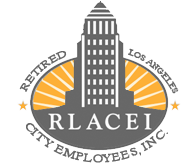
LACERS BOARD UPDATE
By Michael R. Wilkinson, LACERS Commissioner
Email: MikeWilkinson4LACERS@gmail.com
LACERS has recently reported its year end accounting to show how the premiums charged relate to the actual expenses for the last calendar year. The results show a stunning nearly $5 million surplus of the premiums versus the claims costs and expenses for Anthem Blue Cross health and Delta Dental. The surplus will be returned to LACERS and will help to keep costs down if there are premium spikes in future years.
Here is how this works for each firm. Anthem has an experience-rated refunding contract with LACERS. At the end of each plan year, the surplus of the premiums over the claims and administration go back to LACERS after a deduction (if needed) to fund a Claim Stabilization Fund to cover times when the claims and expenses exceed the premiums.
For 2020, Anthem had a surplus of $2.2 million after deducting for the Claim Stabilization Fund. The surplus will go back to two different LACERS accounts depending on whether they were paid by subsidy dollars or member deduction dollars. Either way this is good news since this is ready to pay down any premium spikes in the future.
Delta Dental has a different structure where the plan is completely self-funded. This means that LACERS administers the plan and takes on the prudent risk that the claims and administration do not exceed the premiums. If, on average, the claims and administration is less than the premium, LACERS comes out ahead with self-funding.
The experience with Delta shows that self-funding was a good decision. The self-funding began on Jan. 1, 2019 and the first-year surplus was nearly $1.7 million. For 2020 the surplus was $2.7 million. The two-year total is a surplus of $4.4 million. Self-funding does not cost our members any extra money; in fact, it may help keep costs down.
Okay, why is any of this important to us as Retirees and users of our health and dental plans? Having a financially strong (86 percent funded on an actuarial basis) health, dental and vision plan and a healthy surplus in premiums means that we are less likely to face the “sticker shock” of high premiums since the reserves can be tapped when premiums go up.












